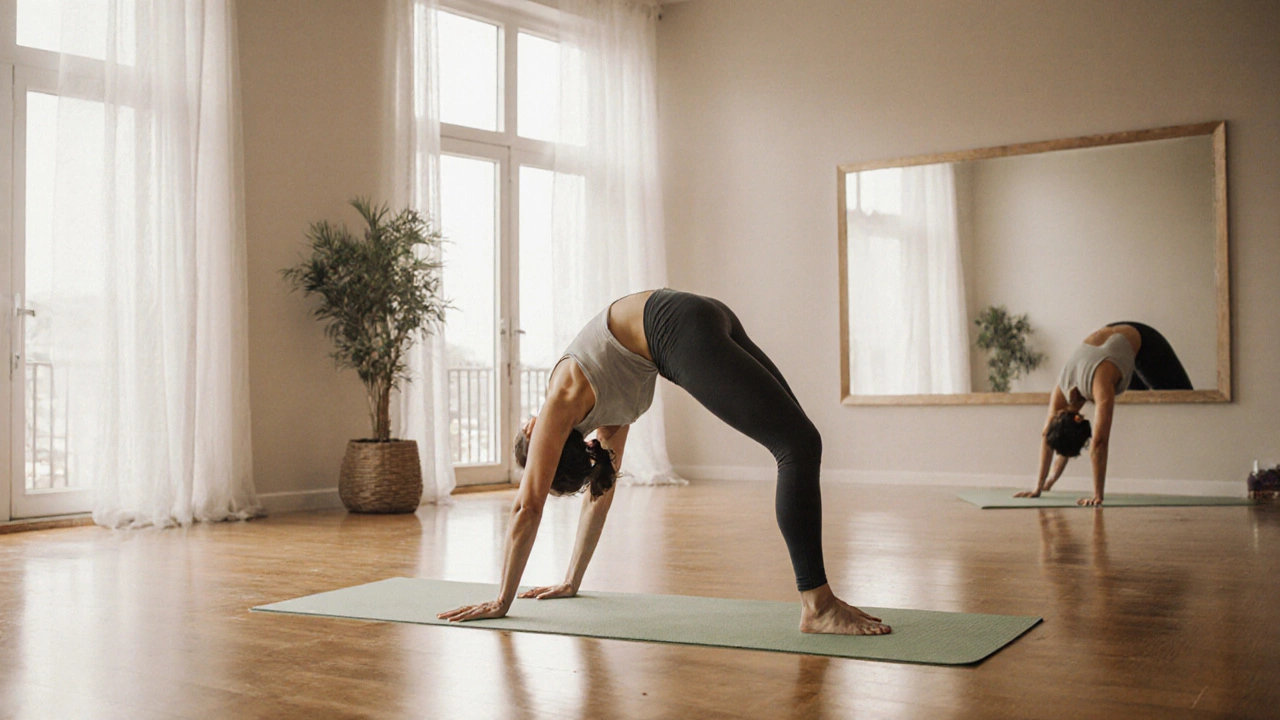Yoga Results Speed – What to Expect and When
When you hear about Yoga results speed, the rate at which practitioners notice physical and mental changes from a yoga routine. Also known as yoga progress timeline, it depends on how often you practice, the style you choose, and your starting fitness level. Understanding this helps you set realistic goals and stay motivated.
One of the fastest‑seeing benefits is flexibility, the range of motion in muscles and joints that improves with regular stretching. Even a few short sessions per week can unlock noticeable loosening in the hamstrings, hips, and shoulders within two to three weeks. Flexibility is a core component of yoga, and its quick gains often spark the enthusiasm to keep going.
Another early win is strength, muscular endurance built through body‑weight poses and holds. While flexibility may show up first, strength gains typically emerge after four to six weeks of consistent practice, especially in styles like Vinyasa or Ashtanga that link movement with breath. These strength improvements support everyday activities and reduce injury risk.
Key Factors That Influence Speed
Frequency of practice is a major driver. A schedule of three 30‑minute sessions per week often yields measurable change faster than a single weekly class. Rest days matter too; they let muscles recover and adapt, preventing overtraining that can stall progress. The yoga style you pick also shapes the timeline: restorative or gentle classes prioritize relaxation and can lower stress within days, while power‑yoga classes target fitness gains that take a few weeks to manifest.
Stress reduction is a hidden but powerful metric of yoga results speed. Stress relief, the decrease in cortisol levels and mental tension achieved through breath work and mindful movement, often appears almost instantly after a calming session. Regular practice can convert that short‑term calm into lasting mood stability, which many people notice after just a handful of classes.
Goal clarity also shapes how fast you see results. If you track specific outcomes—like being able to touch your toes or hold a plank for a minute—you’ll notice progress sooner than if you keep expectations vague. Simple self‑checks every week can turn invisible gains into tangible milestones, reinforcing the habit.
Finally, your personal baseline matters. Beginners typically experience faster visible changes because they have more room for improvement, whereas seasoned yogis may see subtler shifts that accumulate over months. Recognizing where you start helps you appreciate each step, whether it’s a deeper stretch or a calmer mind.
All these pieces—practice frequency, style, stress relief, strength, and personal baseline—interact to shape the overall speed of yoga results. Below you’ll find a curated collection of articles that break down each factor, offer timelines for different goals, and give practical tips to accelerate your progress without overdoing it.

How Quickly Can Yoga Transform Your Body?
Maeve Larkspur Oct 15 0Discover how quickly yoga can reshape your body, the timeline for flexibility, strength, and composition changes, and a proven 4‑week plan to accelerate results.
More Detail